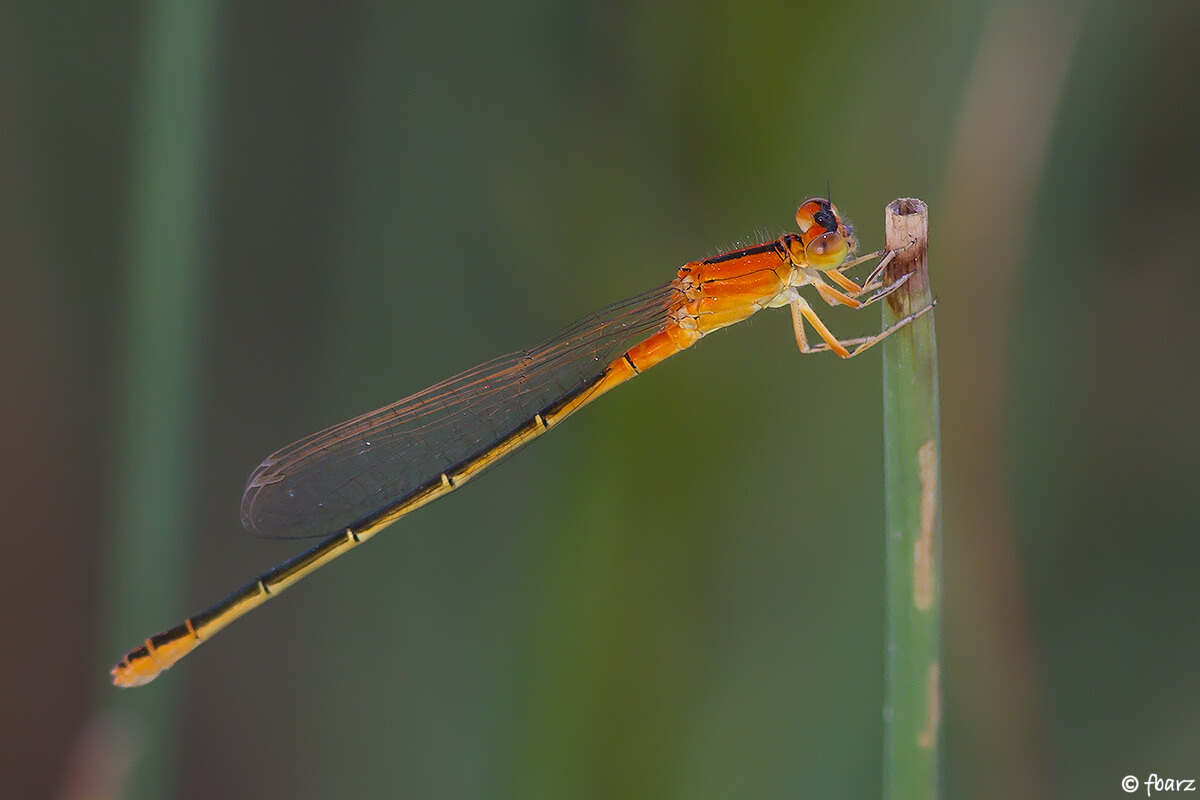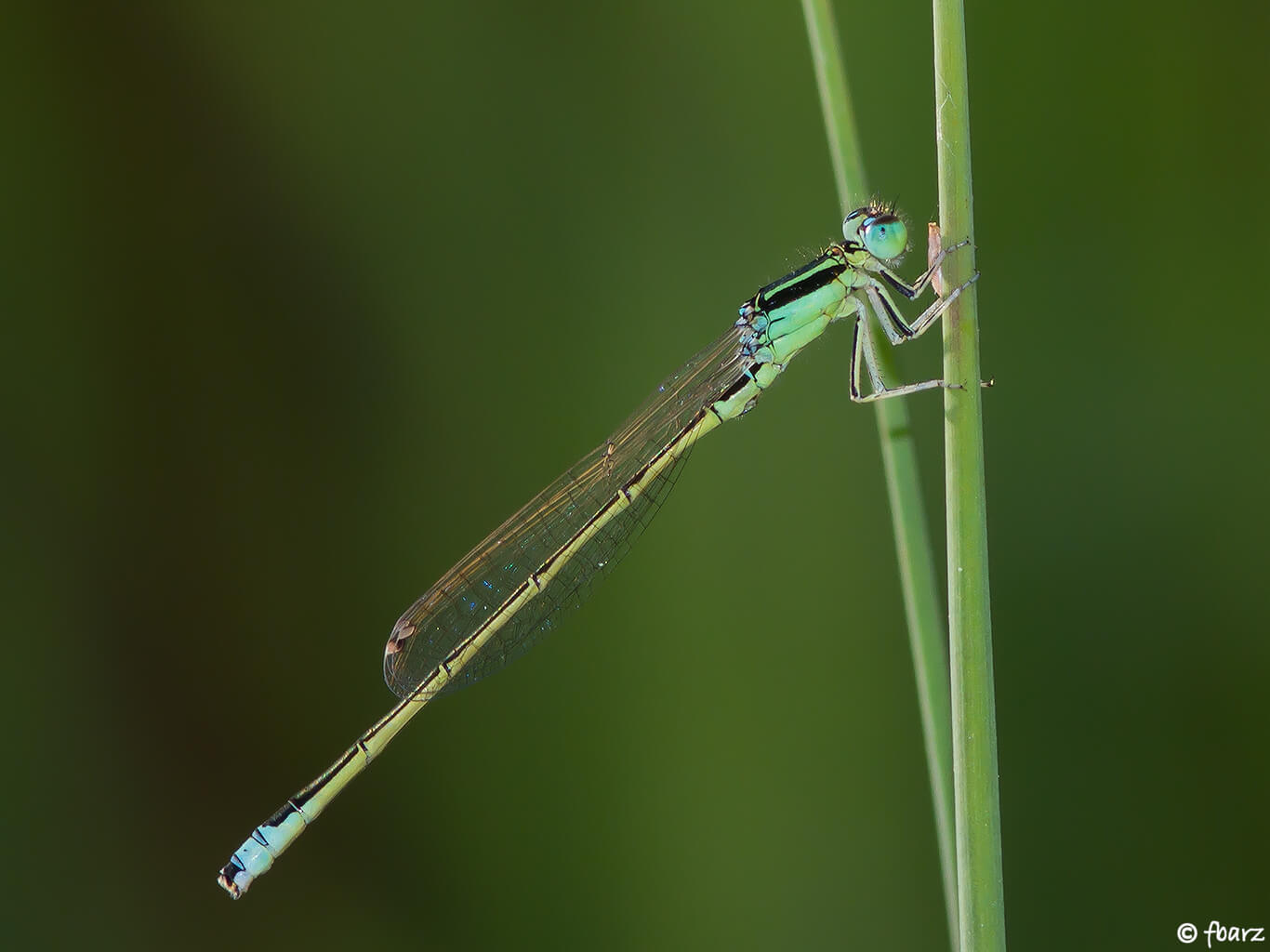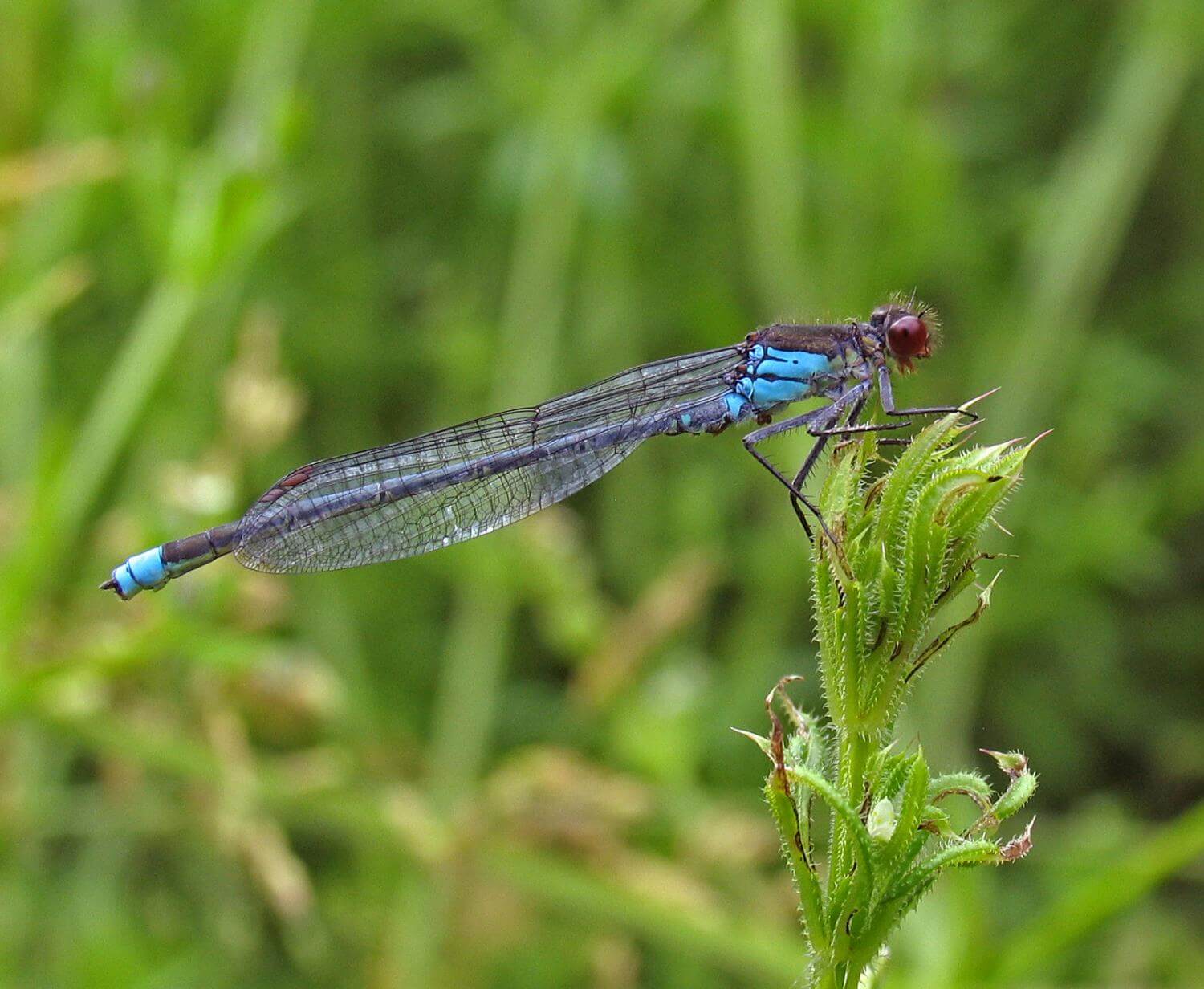Species Information:
Length: 26-31mm
Flight Period: May to September
Both sexes have a two-toned pterostigma (wing spot).
Male: black abdomen with green or blue sides and a small patch of blue near the tip covering segments 8 and 9 with a pair of tiny, but variable, black marks.
Female: are either greeny-brown when mature or bright orange in the immature aurantiaca phase.
Habitat:
Usually found in shallow wetland sites such as bog pools or slow flowing water, fed by seepages and flushes. It appears to prefer early successional habitats with minimal vegetation, although some emergent plants are required at breeding sites. A common feature of most sites is a degree of habitat disturbance, which maintains bare substrate, and the openness of the vegetation
Status & Distribution:
Classed as nationally scarce in the British Red Data Book of Insects. At the turn of the century it was thought to be extinct, but in recent times has shown some range expansion.
In Britain it is most numerous in southwest counties of England and Wales, but there are additional sites scattered across Britain and Ireland. Isolated colonies exist in Gloucestershire, Wiltshire, Oxfordshire, Berkshire, Buckinghamshire and Bedfordshire.
Similar Species:
The related, much commoner, Blue-tailed Damselfly superficially resembles this species but has a different position for the tail spot. At a glance could be confused with the two Red-eyed Damselfly species Red-eyed Damselfly (Erythromma najas) and Small Red-eyed Damselfly (E. viridulum) but are smaller, less robust looking insects and do not have red eyes.

.jpg)



.jpg)